 |
 |
 |
| |
Program for Prescribers Cuts Antiretroviral Errors in Hospital Population
|
| |
| |
IDWeek, October 2-6, 2013, San Francisco
"HIV medication error rates of 72% to 84% of inpatient hospital admissions have been reported in the literature.....
[in this study] Overall errors decreased by 35% (from 38% to 24%, p<0.01) primarily due to a reduction in PI prescribing errors"
Mark Mascolini
A system to help inpatient antiretroviral prescribers avoid common errors such as incomplete regimens and drug-drug interactions reduced the proportion of admission with such errors 35% in a before-and-after study involving almost 1400 patients at a Bronx medical center [1]. Most of the improvement could be traced to fewer errors involving protease inhibitors.
When antiretroviral-treated people get admitted to the hospital, they may receive care for inpatient prescribers unfamiliar with some complexities of antiretroviral prescribing. Educational materials, staff training, and support from antiretroviral-savvy pharmacists can help but are sometimes unavailable. To address in-hospital prescribing errors, researchers at Montefiore Medical Center in the Bronx, New York, developed customized order entry sets (COES) to improve antiretroviral prescribing. COES display dosing recommendations, identify potential drug interactions, and remind prescribers to avoid incomplete antiretroviral regimens.
Montefiore Medical Center, a large academic health system in the Bronx, includes a specialized ambulatory AIDS Center serving more than 3000 people. For this analysis, researchers analyzed records of all adult inpatients for whom antiretrovirals were prescribed in a 6-month period before COES began (September 2010 to February 2011) and after COES began (September 2011 to February 2012). Data extracted from records included patient characteristics, renal function, antiretroviral orders, and concurrent medications.
The analysis focused on 723 patients in the pre-COES period and 661 in the post-COES period. Median age stood at 51 in the pre-COES period and 52 in the post-COES period. Respective proportions of women in each group were 46.1% and 47.7%. The groups were racially balanced, with almost half African American, almost 30% multiracial, 8% Hispanic, and 8% white. Median hospital stay stood at 5 days in both groups. About 45% of patients overall had a viral load below 40 copies, about one third had a CD4 count between 201 and 499, and about one quarter had a CD4 count above 500.
Before the COES program began, 68.2% of regimens prescribed in the hospital involved protease inhibitors (PIs). The PI proportion dropped marginally to 64.8% in the post-COES period. From one period to the next, the proportion of non-PI regimens rose from 18.9% to 23.6%, while the proportion of single-pill regimens remained stable at 12.9% and 11.6%.
The proportion of hospital admissions with prescribing errors fell 35%, from 38% (275 admissions with errors) in the pre-COES period to 24% (164 admissions with errors) in the post-COES period, a highly significant improvement (P < 0.01). Among all antiretroviral classes ordered in the hospital, prescribing errors fell significantly for incomplete regimens (6.9% to 3.5%, P = 0.006), wrong doses (13.8% to 7.0%, P < 0.001), doses not adjusted for renal function (9.4% to 5.3%, P =0.004), and drug interactions (10.2% to 5.8%, P = 0.002). The researchers counted 380 total errors in the pre-COES period and 198 in the post-COES period.
From the pre-COES period to the post-COES period, proportions of prescribing errors fell sharply for PIs (41.6% to 28.8%), stayed low for nonnucleosides (4.7% to 3.5%%), and rose for nucleosides (33.9% to 45.4%). Renal dose adjustment errors improved for nucleosides (P = 0.004), while dosing (P < 0.001), frequency (P = 0.002), and drug-interaction errors (P = 0.006) improved for PIs.
The researchers proposed that, "in facilities without dedicated HIV pharmacists and inpatient HIV medical teams, COES may prove to be safe, efficient, and cost-effective." But they cautioned that any COES program "must stay current with prescribing patterns and new medications."
Reference
1. Weiss C, Veltri K, Guo Y, Chung P, Minamoto G. Customized order entry sets reduce antiretroviral prescribing errors in an urban academic medical center: another opportunity for antimicrobial stewardship. IDWeek 2013. October 2-6, 2013. San Francisco. Abstract 175.
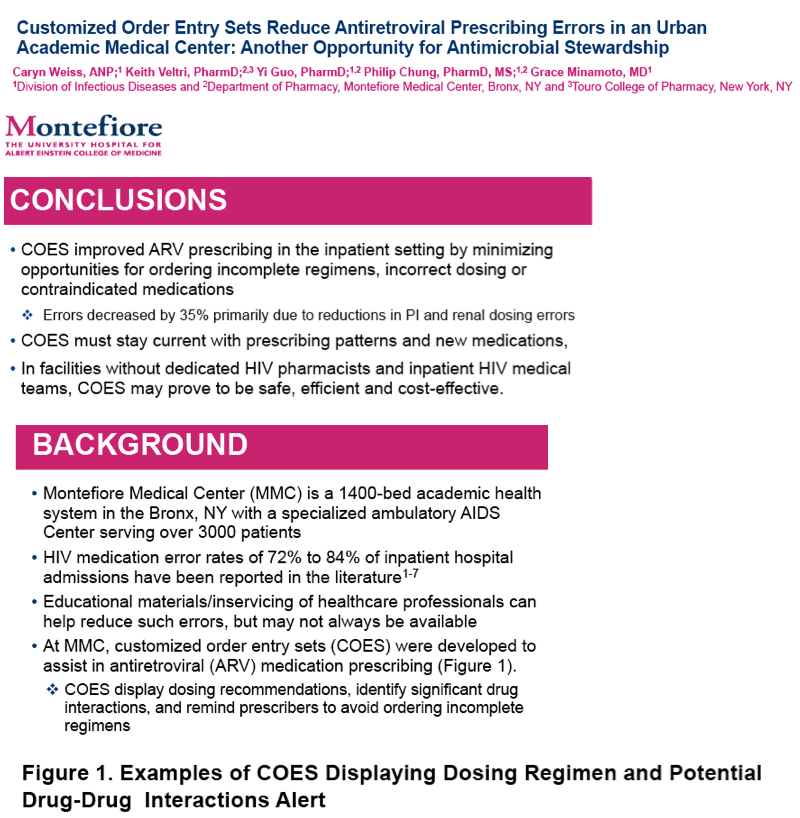
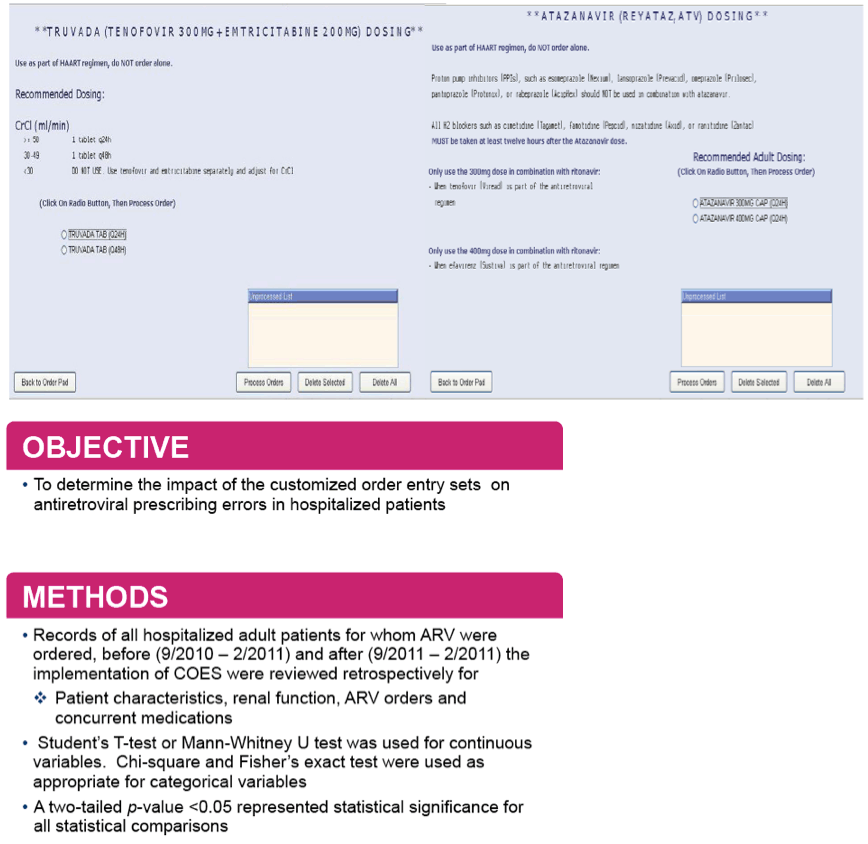
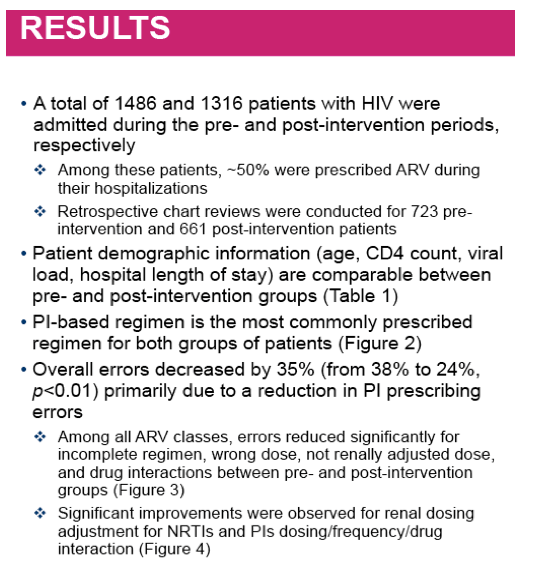
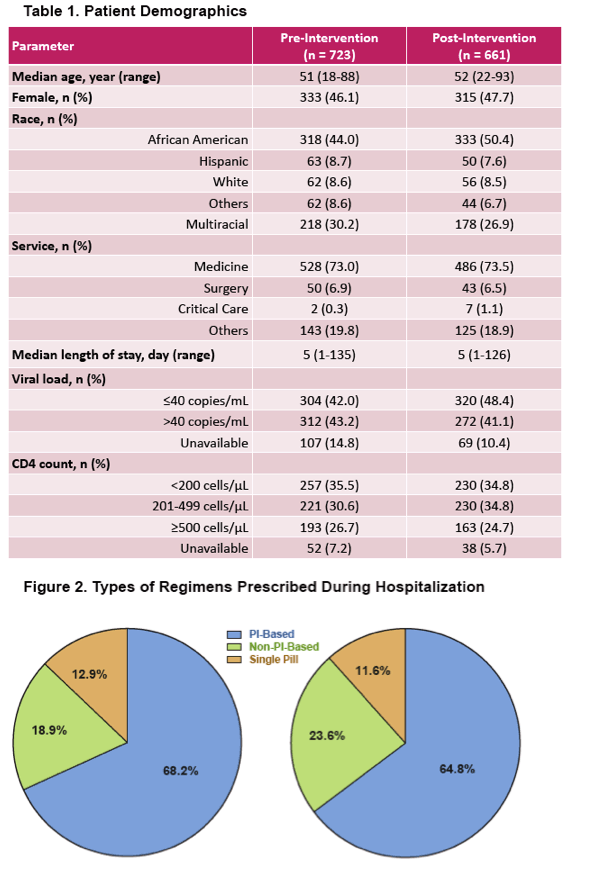
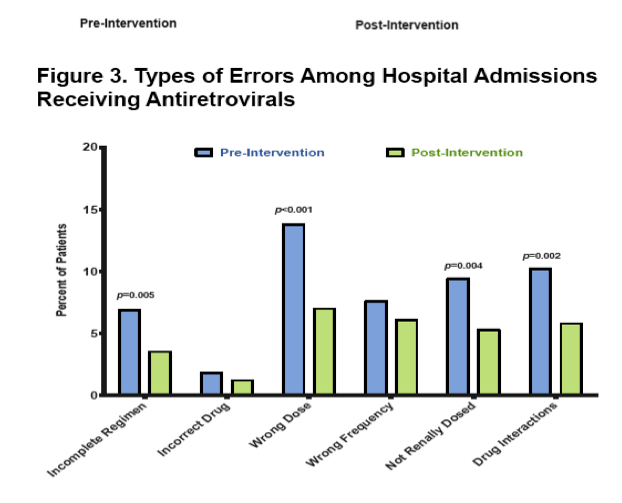
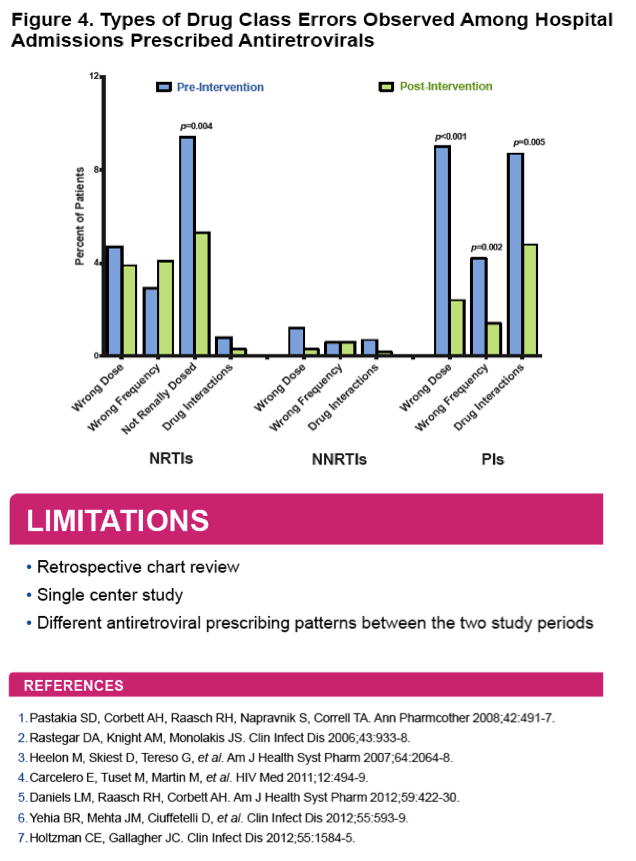
|
| |
|
 |
 |
|
|